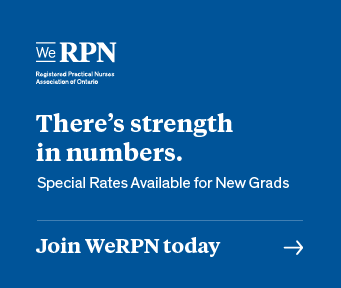The Canadian population is aging rapidly. In the next decade, the proportion of our population aged 65 and older will exceed 20 percent — for the first time ever in the history of our country. The number of adults over 85 will quadruple, and the number of centenarians will triple. Our institutions, policies, services, products and models of care have not yet caught up with this “fourth stage of life.” Nor have we yet built a longevity-ready health workforce.
We know what Canadians want in their later years. They want to retain their independence; remain in their own homes; stay connected to community, friends and family; have purpose; retain their mobility; and have security in the form of income, housing, food and physical safety.
In essence, they want to age with vitality, health, agency and dignity — not loneliness, sickness, pain and dementia.
To meet aging adults where their values and expectations lie, a few fundamental, systemic challenges will need to be cracked:
SUSTAINABILITY OF OUR HEALTH SYSTEMS
Patients aged 65 and older account for nearly half of Canada’s health care resources. We simply will not be able to match the supply of health care resources to demand without rebasing some core assumptions of how we design, deliver and fund health care services.
DEMENTIA
There will be increased numbers of people suffering from some form of dementia, a condition that has devastating consequences for the individual and their families. There is currently no line of sight to strong therapeutic options, nor is there capacity in memory care or other institutional models of supporting individuals living with this terrible disease.
CAREGIVING
Some 70 percent of older adults will need assistance to care for themselves at some point. This creates a huge burden on family caregivers, more than 75 percent of which are working Canadians. Further, we are not in any position to train and hire the needed formal health and social care workforce to support the complex physical and social needs of the elderly population.
HOUSING AND LONG-TERM CARE MODELS
Almost all — 93 percent — of aging adults live at home and prefer to live in place. Yet, we have a dominantly institutional model of relocating our older adults to hospitals and nursing homes when they inevitably become too frail. We simply will not be able to build enough buildings or beds to absorb the demand — and few seniors want to be in these facilities anyway. Further, at the end of life, some 75 percent of Canadians prefer to die at home, but only 15 percent actually do. The majority die in hospitals, spending their final days on busy hospital wards, occupying a hospital bed that could be used by someone with an acute illness, which is what hospitals were originally built for.
LONELINESS AND ISOLATION
There is already a near epidemic of older adult loneliness. In Canada, people aged 80 and older report feeling lonely up to 80 percent of the time. Many seniors identify the TV as their main company. Older adult loneliness is linked to many illnesses including depression, high blood pressure, sleep disturbances and worsening dementia. Conversely, higher levels of social engagement lead to less illness and lower mortality rates.
LABOUR FORCE AND TAX BASE
As the ratio of retirees to workers grows, the available tax base to fund the living, health and social care needs of older adults will shrink. On the flip side, new labour force opportunities come with an aging population. For example, many elderly workers are becoming senior-preneurs or elder-preneurs, starting new ventures. They also provide the highest number of volunteer hours; this can be a new pool of resources for society to access if we can figure out creative ways to unlock it at scale.
Taken together, there is a huge opportunity for meaningful innovation to prepare for the future of aging that will impact millions of Canadians. Tackling both the systemic barriers and the opportunities will require a new set of problem-solvers, tools and capabilities. Many of these new capabilities have yet to be developed or tapped into at a meaningful level in industry, government or civil society.
Nurses uniquely lead health care with the voice, opinion, knowledge and expertise that is recognized to produce the best possible outcomes, processes and products. They are also innovators by default. . . .
Why Nursing?
The nursing workforce could be a starting point for activating a new generation of problem-solvers to lead us into being a longevity- ready society. Firstly, there are a lot of them: the more than 400,000 nurses make up some 25 percent of all health care personnel (and health personnel make up more than 11 percent of Canada’s em- ployed citizens).
Nurses see unmet needs and gaps in care throughout a client’s journey. This knowledge of the client journey can lead the way as solutions are identified and introduced into health systems. Nurses see patients up close. They follow complicated procedures, sometimes convoluted ones, to administer care. They painstakingly document their patients’ conditions and reactions, and they are the first caregivers to sound the alarm when a situation takes a turn for the worse. In short, they have the most direct knowledge of their patients — and the best viewpoint from which to tackle problems.
Nurses uniquely lead health care with the voice, opinion, knowledge and expertise that is recognized to produce the best possible out- comes, processes and products. They are also innovators by default — we have heard nurses described as “the original hackers of the med- ical supplies closet” who “do more than 70 workarounds a shift.”
Together with international peers, SE Health has been starting a movement in Canada to elevate nurses to be at the forefront of transformation in health care, and of society more broadly. The global movement is anchored by a new organization named SONSIEL (Society of Nurse Scientists Innovators Entrepreneurs & Leaders). SONSIEL’s mission is to magnify, network and elevate the expertise of nurse innovators as transformation agents.
In partnership with SONSIEL, we are promoting and elevating the nurse profession to lead the transformation of our aging society.
About the authors
Dr. Zayna Khayat is the Future Strategist at SE Health. Mary Lou Ackerman is a nurse and VP Innovation at SE Health.
SE Health is Canada’s largest social enterprise, focused on in-home care, seniors’ lifestyle and family caregiving, to forever impact how people live and age at home.
This is an adaptation of a recent blog written for an aging series in the Future of Good, a community of forward- thinking people who are seeking to impact society for good.


